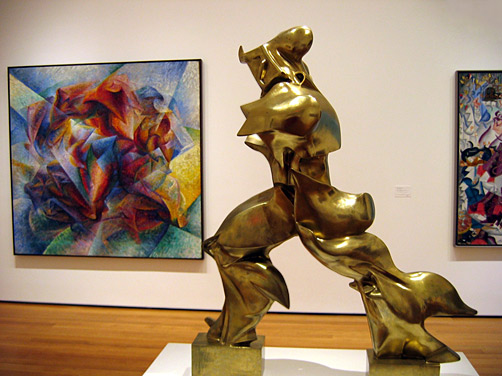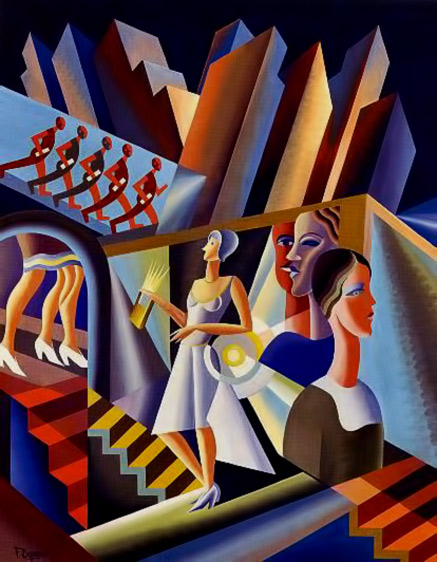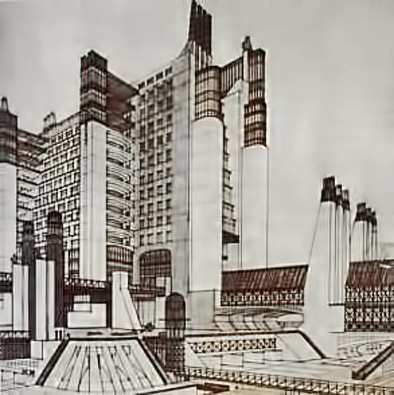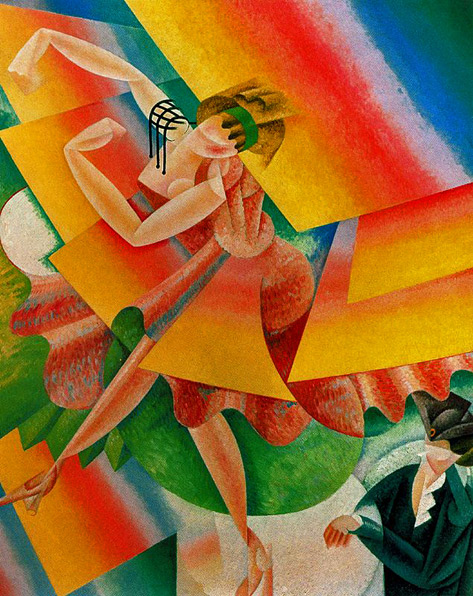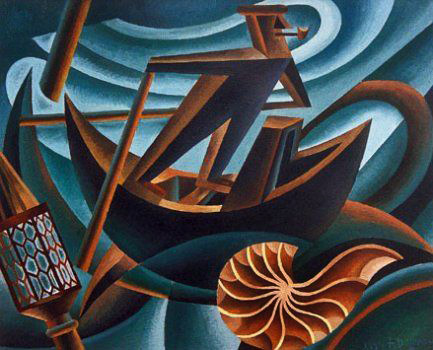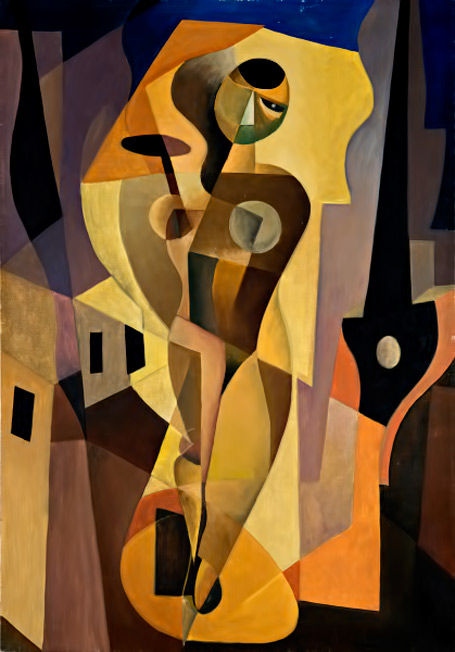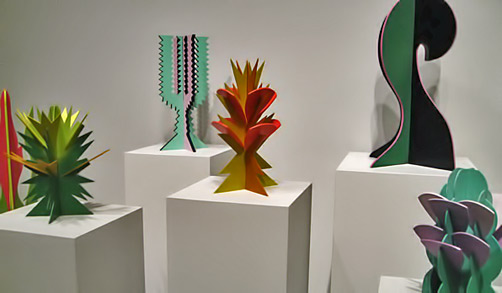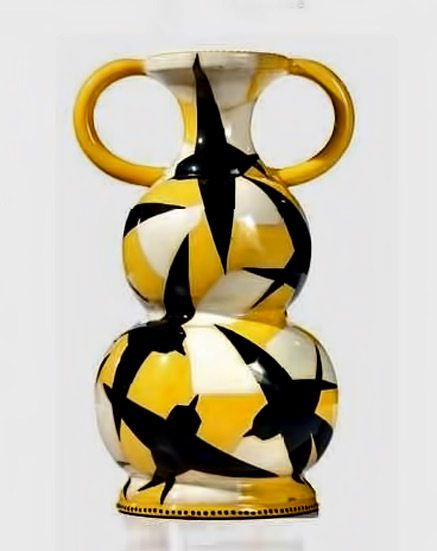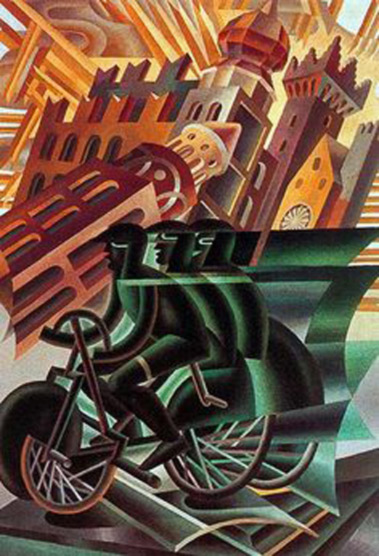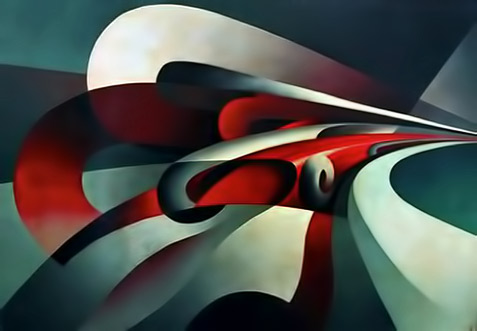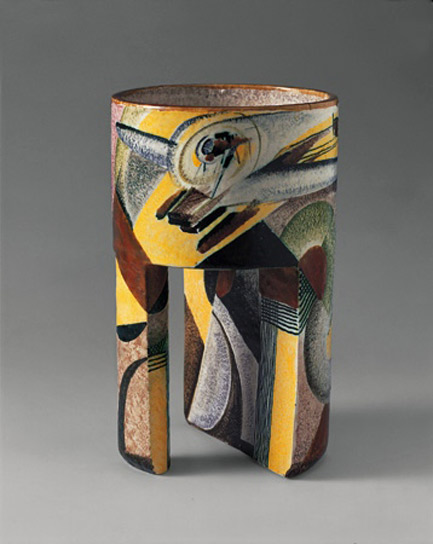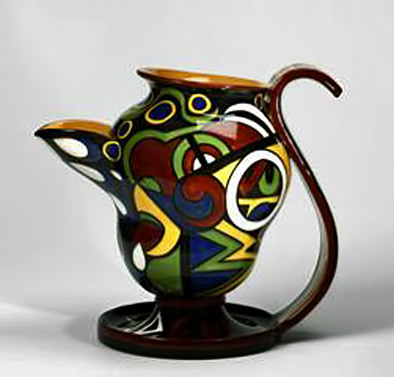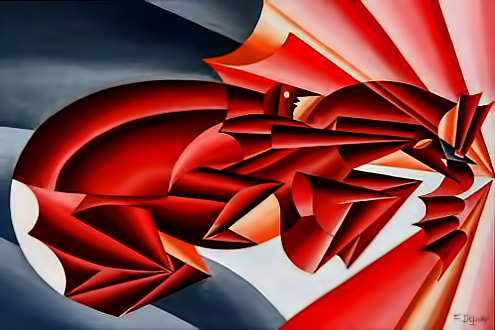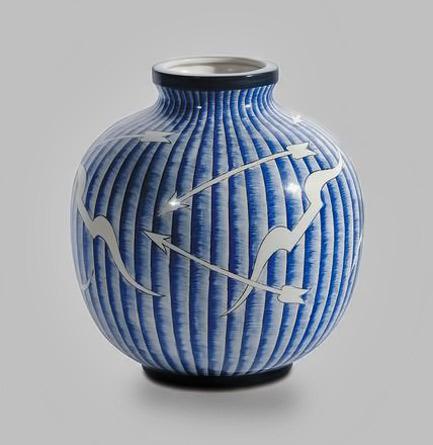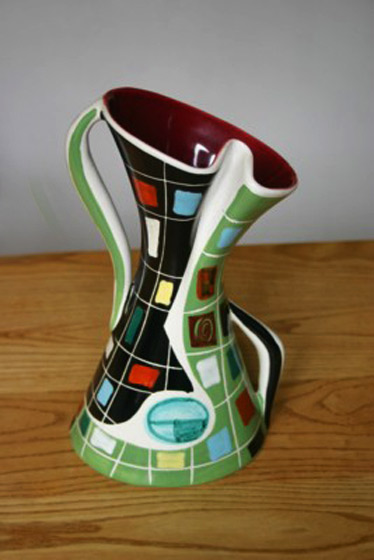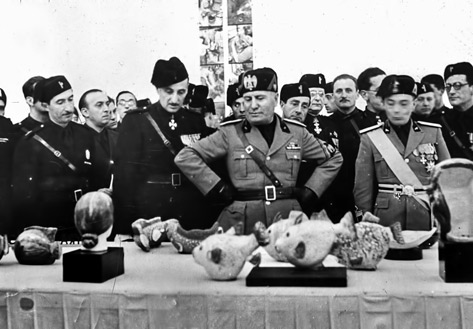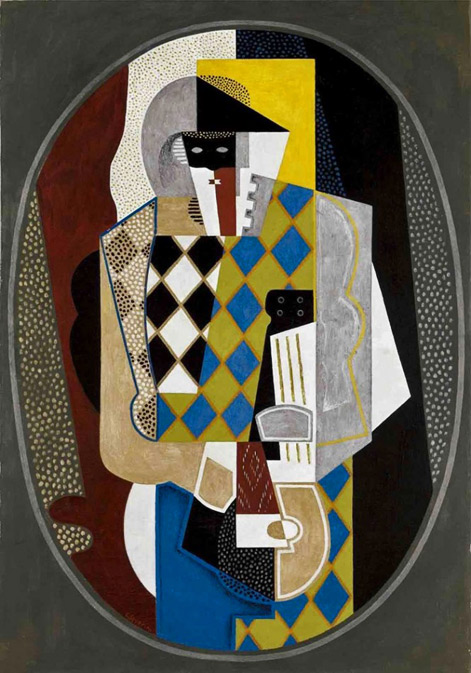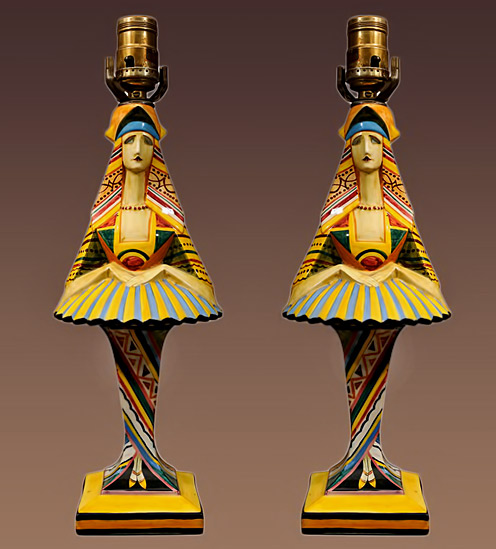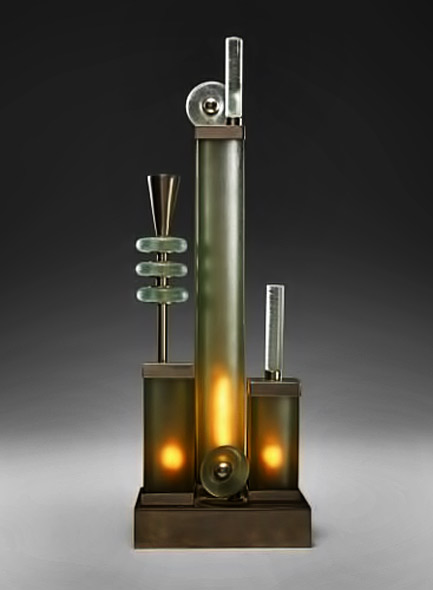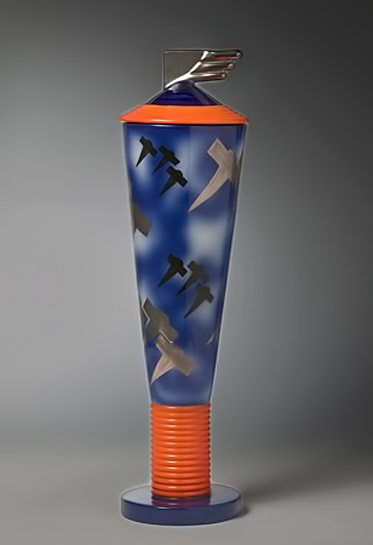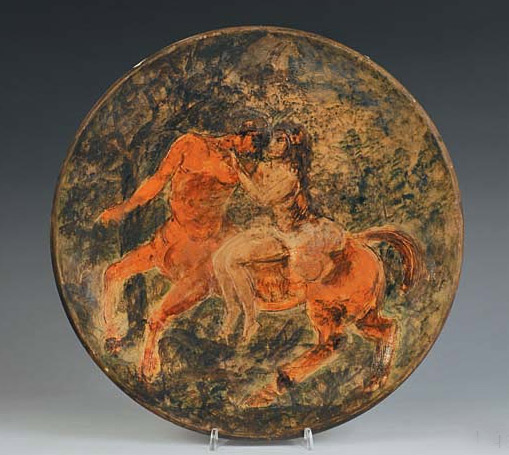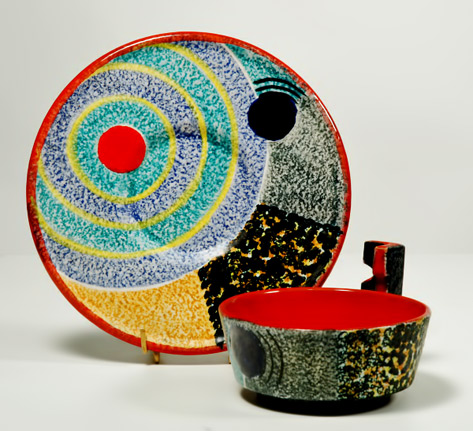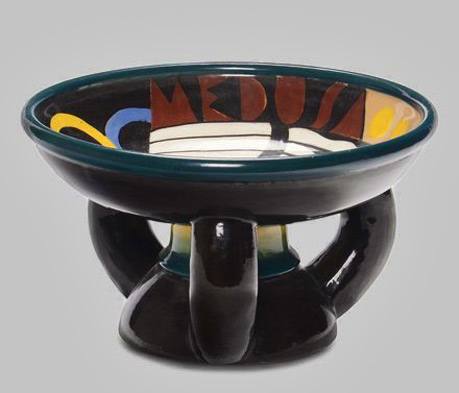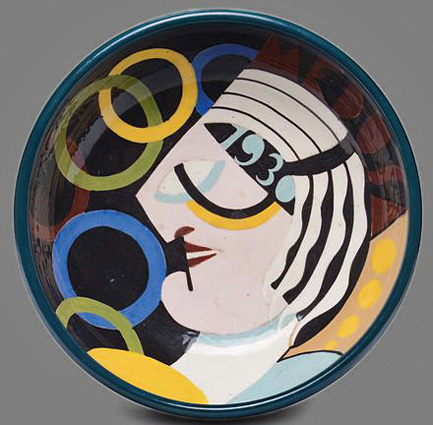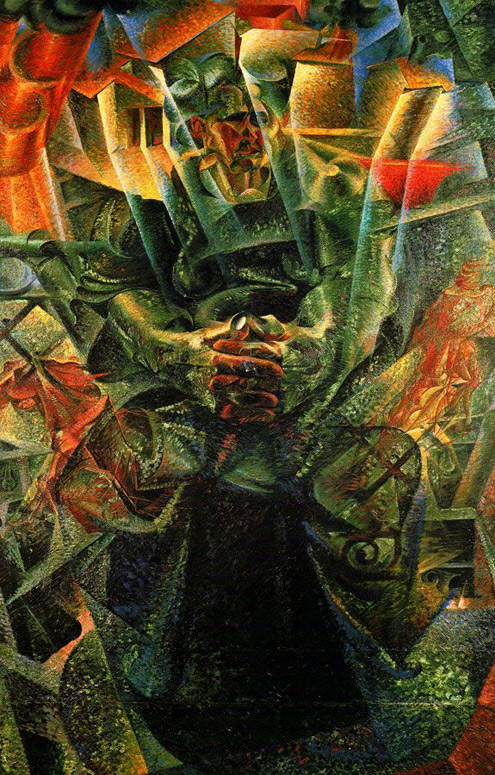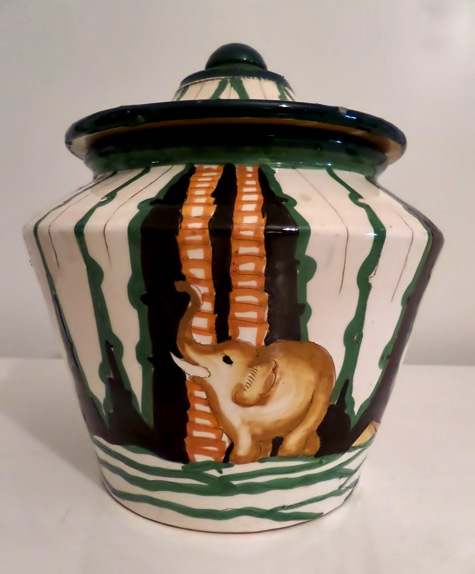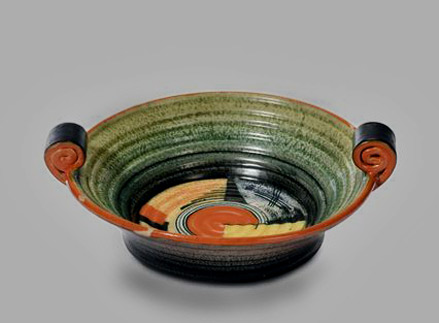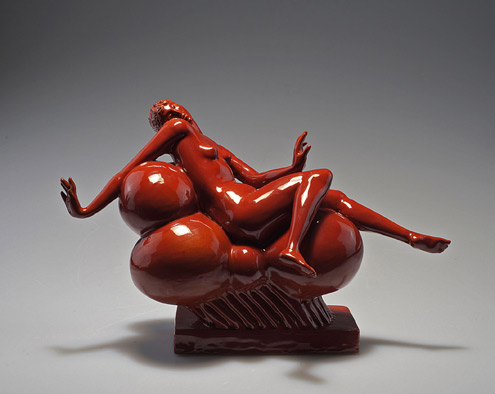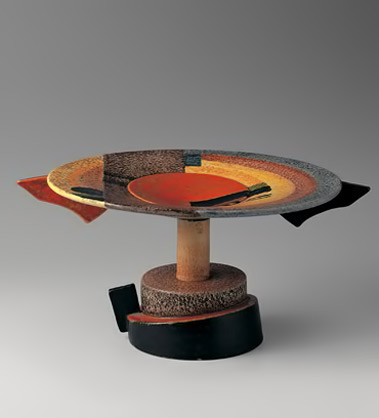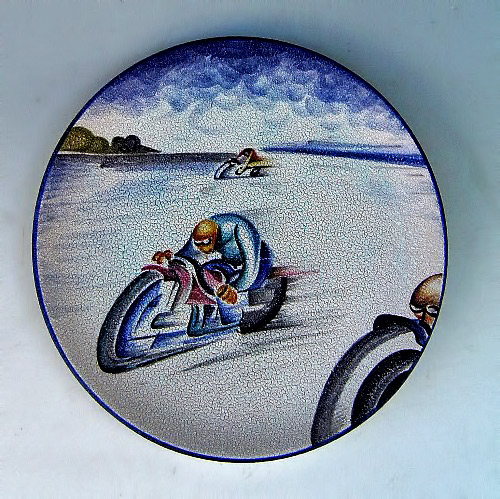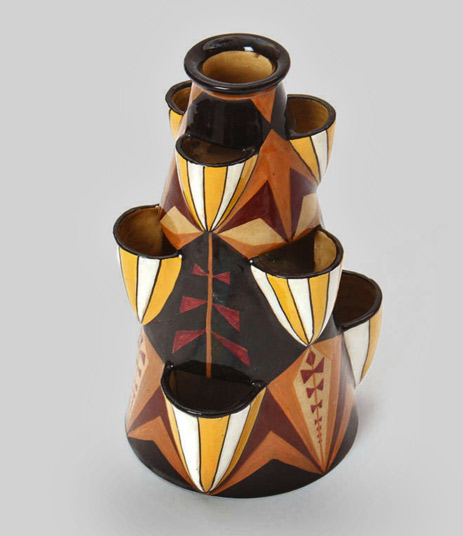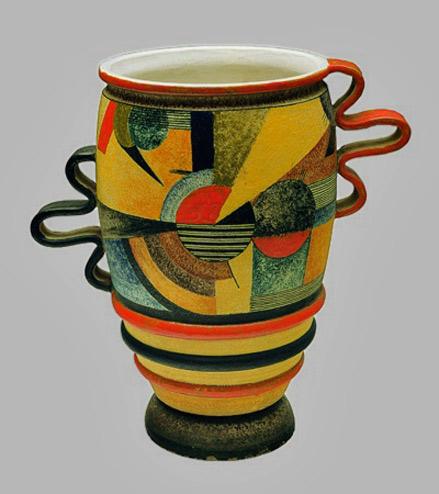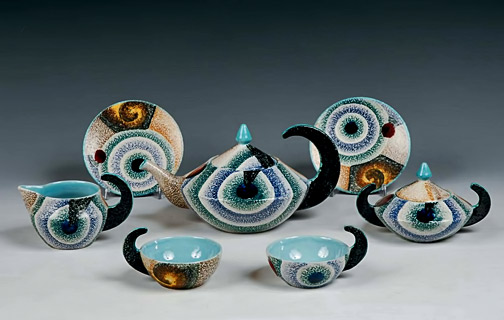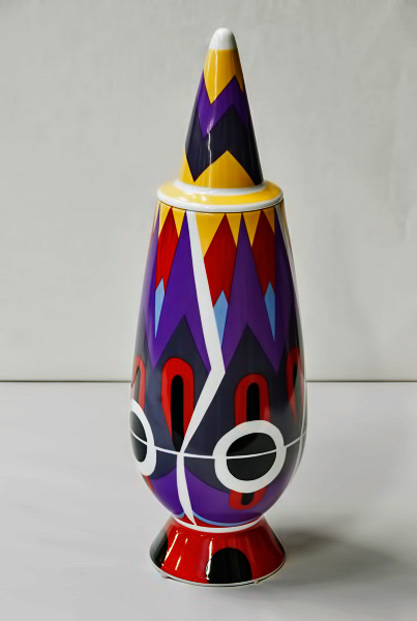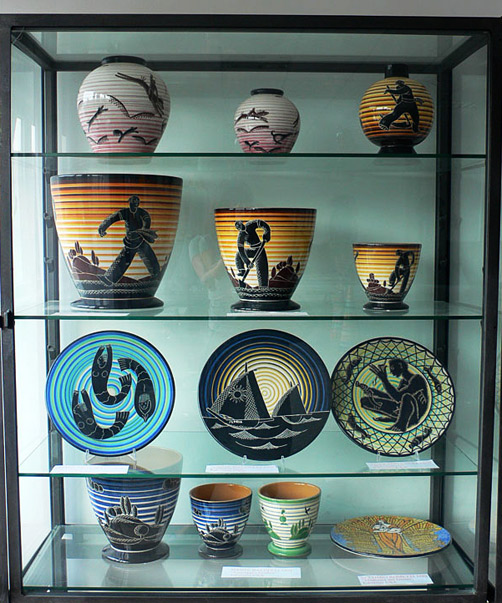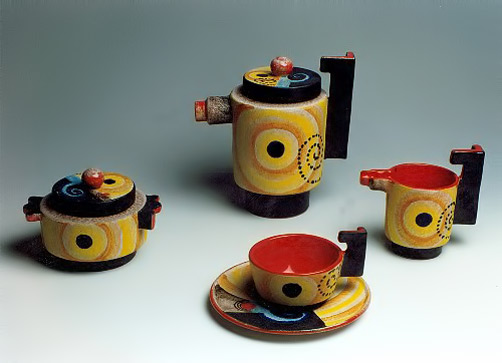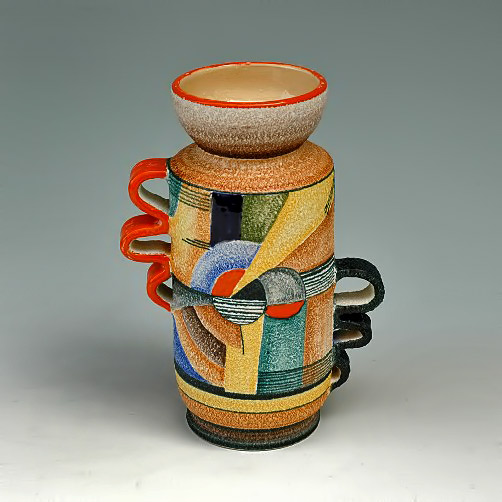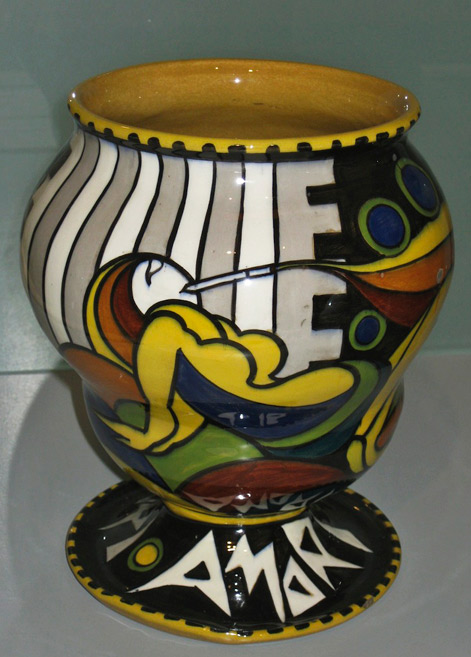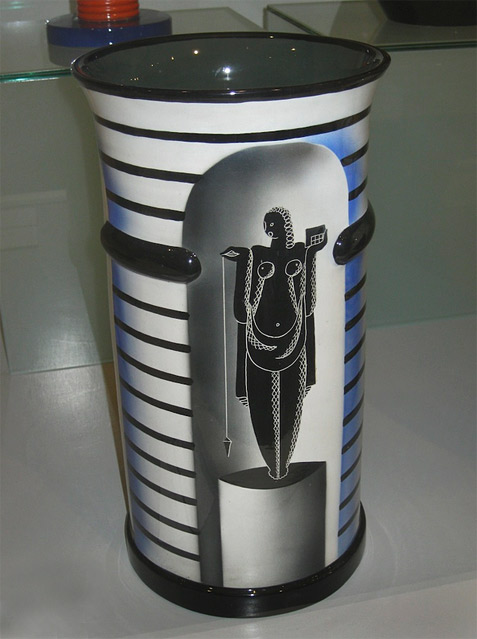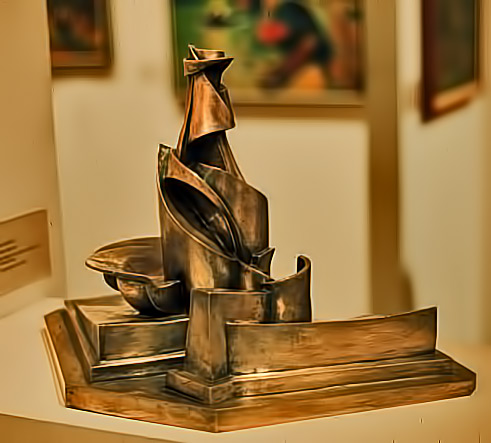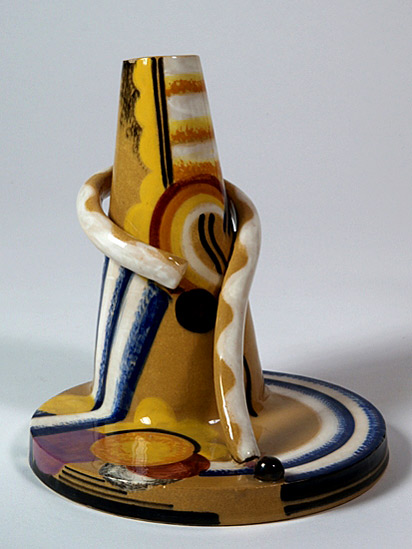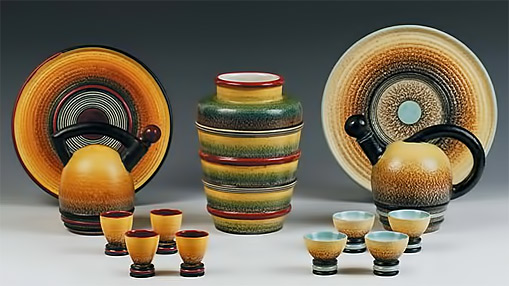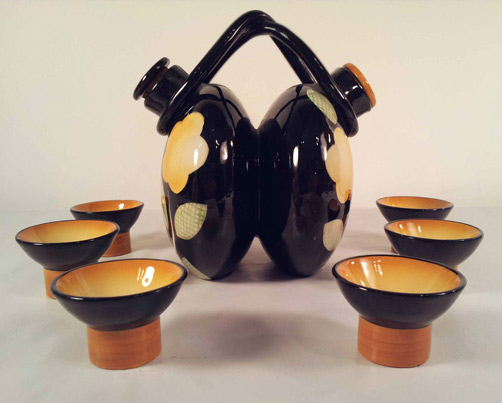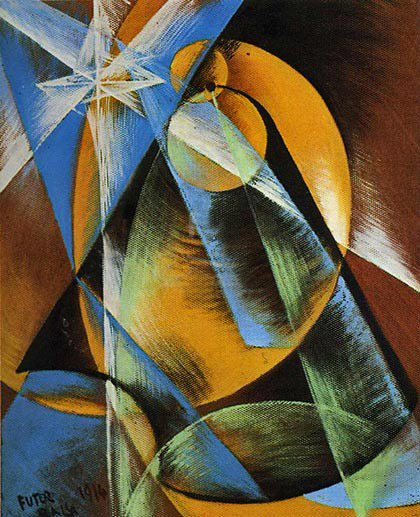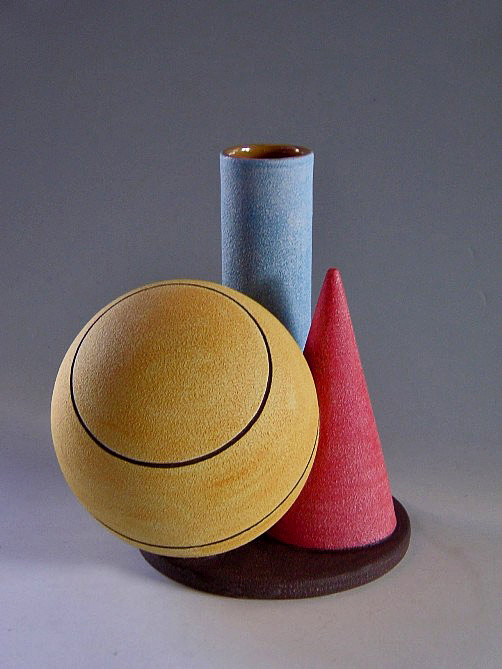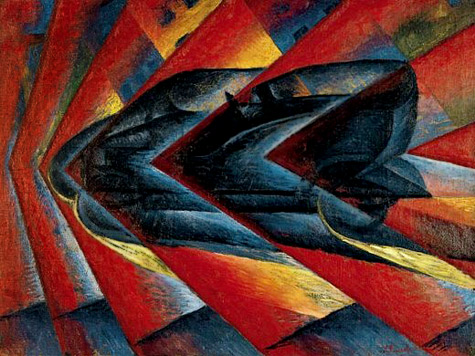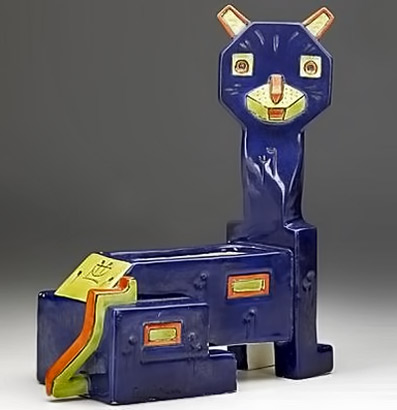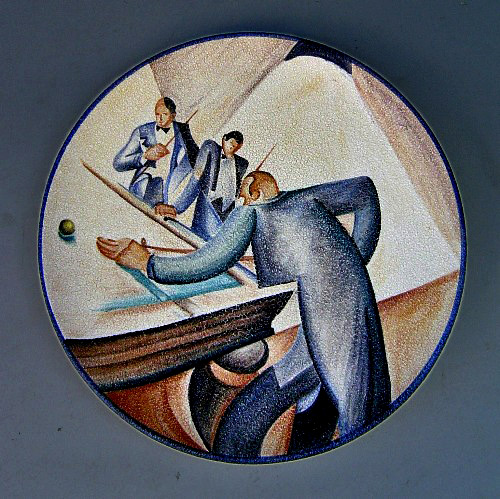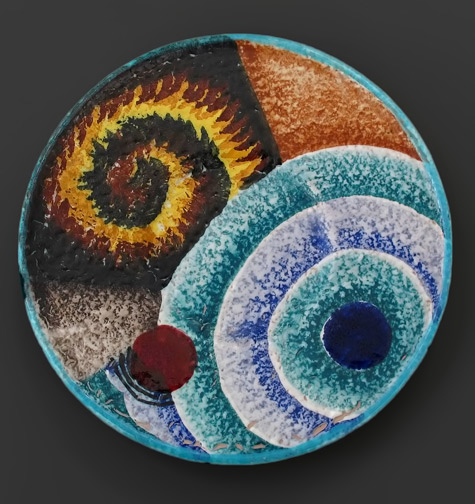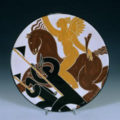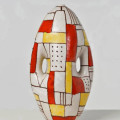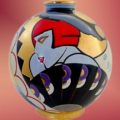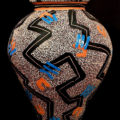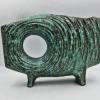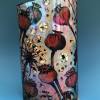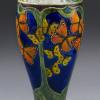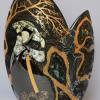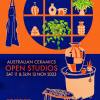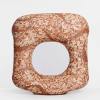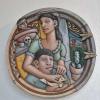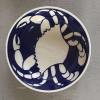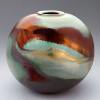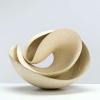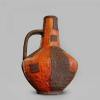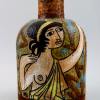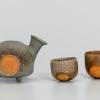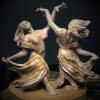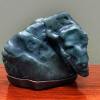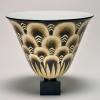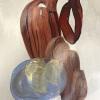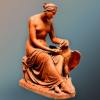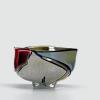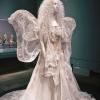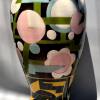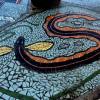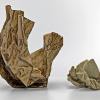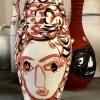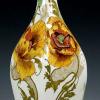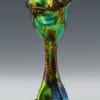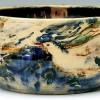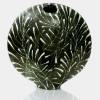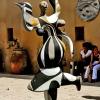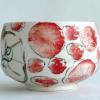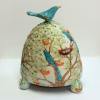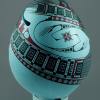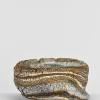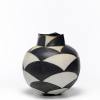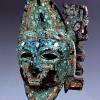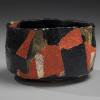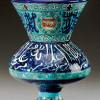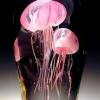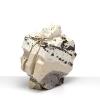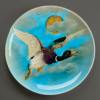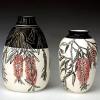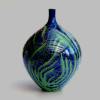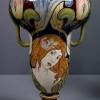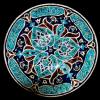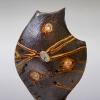Italian Futurism revolution
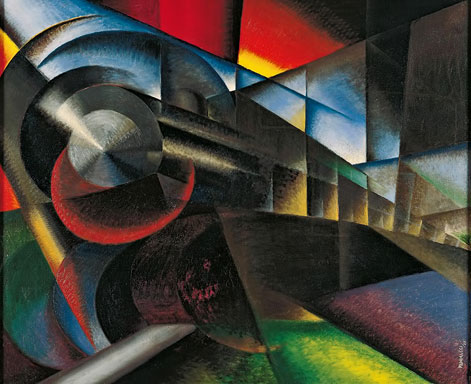
‘Speeding Train’, Ivo Pannaggi, 1922.
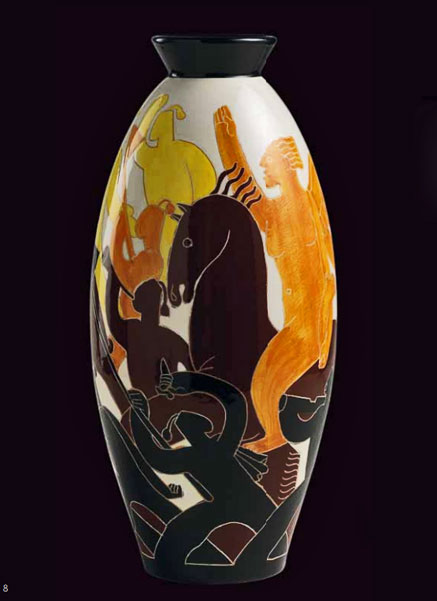
‘Marcia su Roma’ – C.Cagli – Rometti Italia
1932
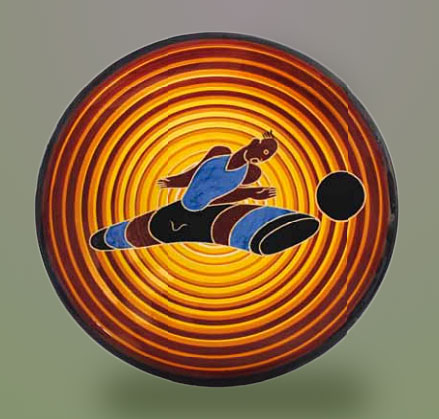
‘Il-Calciatore’ – D.Baldelli, Rometti
1934
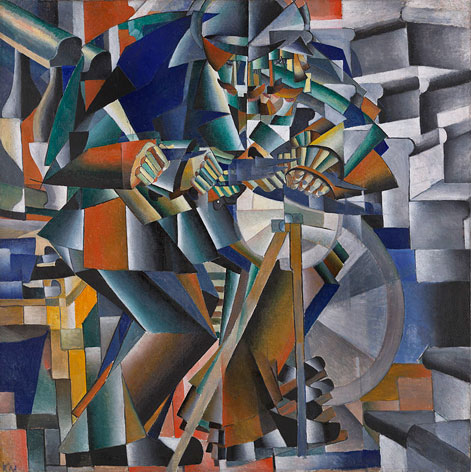
‘The Knife Grinder’ – (Principle of Glittering) by Kazimir Malevich
Russian Cubo Futurism, 1913
When Aristarkh Lentulov returned from Paris in 1913 and exhibited his works in Moscow, the Russian Futurist painters adopted the forms of Cubism and combined them with the Italian Futurists’ representation of movement.
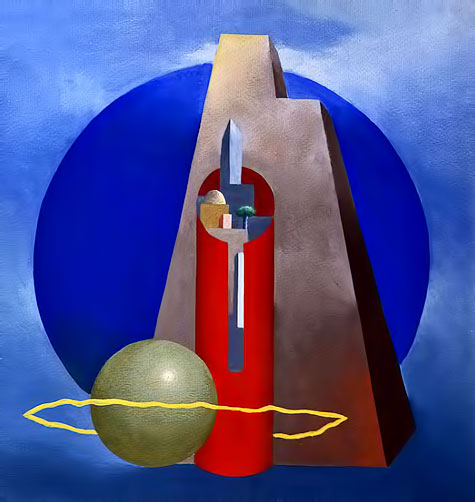
‘Aeropittura’—Fillia (Luigi-Colombo), 1932
Museo Novecento
Umberto Boccioni Futurist painting, ‘Dynamism of a Soccer Player’ and sculpture ‘Unique Forms of Continuity in Space’
Reconstructing the Universe at the Guggenheim, 2014
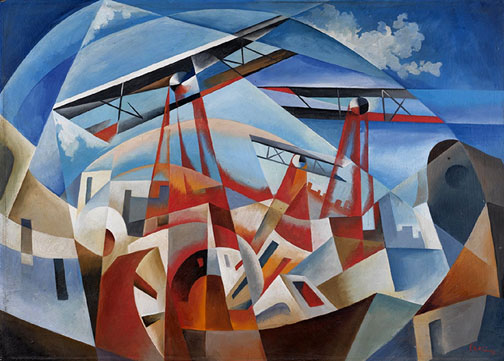
‘Bombardamento Aero’ – Tullio Crali
1932
SPEEDING INTO THE FUTURE – Futurist art
Futurism was conceived in a period at the beginning of the twentieth century where there was an unprecedented shift in technology and innovation in pursuit of modernity. This was provoked by the political upheavals at this time and new technological advances in communication, travel and mass production, all adding to the perception of increased speed.. The avant garde, futurist movement began in Italy with grandiose aspirations of shaking Italy out of its cultural malaise, which had hardly changed from the classical era of 16th century, to embrace a new modernism. This was all stirred by the launch in 1909 of the Futurist Manifesto by Filippo Tommaso Marinetti.
The Futurist movement celebrated the dawning of a new world featuring themes of motion, speed and technology, by eagerly embracing new interpretations of sculpture, painting, music, architecture, ceramics and fashion with rampant colours and explosive energy. The reality of this quickly changing world was to be expressed by an omnipresent dynamism. Even gastronomy, poetry and graphic design were given attention. Just as Art Nouveau had made a deliberate break away from classical art, Futurism went to another level in renouncing the classical romanticism and replacing it with an audacious social and artistic revolution in culture and urbanism.
The early Futurist artists that took up the cause were Carlo Carrà, Umberto Boccioni and Luigi Russolo and Gino Severini. Settimio Rometti, founder of Rometti Ceramiche, was also one of the first in Italy to break away from the figurative style of the late Renaissance and Art Nouveau traditions and take up the innovative ideas of the avant garde in international art and design, created by such artists as Corrado Cagli, Dante Baldelli, Mario Di Giacomo, Giacomo Balla, and Fortunato Depero. By 1912 the Futurist movement already had considerable momentum and when Italian Fascism gathered pace in 1921, the artists had already escaped into the future with their art.
Fortunato Depero
In 1910, the father of Futurism, Filippo Marinetti, in an act of cultural radicalism, had dropped leaflets from the Campanile in Saint Mark’s Square in Venice, calling for the city’s canals to be filled with the rubble of its palaces, to herald in a new era of artistic innovation and military and economic renewal in the Adriatic region. The futurists released many ambitious Manifestos designed to draw passionate attention to their cause and provoke a cultural shift. The second Futurist manifesto of 1910 proclaimed: “Everything is in movement, everything rushes forward, everything is in constant change.” Their fervor for revitalizing the Italian spirit through art, design, technological innovation and education later became aligned with the nationalistic, expansive goals of the Italian Fascist movement. Despite the profound influence Futurism had on the development of modern design, it was slightly tainted by this association. Futurism had developed into a broad multi-media socio-politico-cultural movement. However the politicizing of the movement by some of its zealous members had little representation or impact on the art itself. Overall the art remained pure and the drive and inspiration of the futurist artists transcended the darker elements of this era and triumphed in shaping the direction and design aesthetic of the 20th century. Futurism had a tangible influence on art movements that followed including Art Deco, Vorticism, Constructivism, Dada, Surrealism and Mid Century modernism. For a movement that didn’t even span three decades, its vibrancy and originality has made a lasting contribution.
‘Women, stairs, skyscrapers’ – 1930 – Fortunato Depero
Drawing by Italian futurist architect Antonio-Sant’Elia
FUTURIST CUBIST EXUBERANCE
One of the defining aspects of Futurist art was its adaption of cubism. Whereas Cubism focused on dividing objects into their component geometrical shapes and reassembling them abstractly, Futurism regarded all objects as an interconnecting whole by emphasizing the evident contiguity of all things seen. The mind doesn’t perceive objects to be separate from their surroundings “The gesture which we would reproduce on canvas shall no longer be a fixed moment in universal dynamism. It shall simply be the dynamic sensation itself”. Boccioni, perhaps the most dedicated to the aspirations of Futurism, began by re-working cubist techniques in drawings and in three-dimensional renderings in attempts to show the contiguity and flux of things. As described in this manifesto, his designs featured bold groupings and large-scale disposition of planes and masses creating a heroic industrial expressionism. His vision was of a highly industrialized and mechanized city of the future, which he saw not as a mass of individual buildings but as a vast multi-level interconnected and integrated conurbation designed around the “life” of the city. The Italian futurist Antonio Sant’Elia’s extremely influential designs featured vast monolithic skyscraper buildings with terraces, bridges and aerial walkways.
‘Bailarina’ – Gino Severini -1915
Extract from a letter Gino Severini wrote –
“In the early days the Cubists’ method of grasping an object was to go round and round it; the futurists declared that one had to get inside it. In my opinion the two views can be reconciled in a poetic cognition of the world. But to the very fact that they appealed to the creative depths in the painter by awakening in him hidden forces which were intuitive and vitalizing, the Futurist theories did more than the Cubist principles to open up unexplored and boundless horizons.”
“Futurism and Cubism are comparable in importance to the invention of perspective, for which they substituted a new concept of space. All subsequent movements were latent in them or brought about by them… the two movements cannot be regarded as in opposition to each other, even though they started from opposite points; I maintain (an idea approved by Apollinaire and later by Matisse) that they are two extremes of the same sign, tending to coincide at certain points which only the poetic instinct of the painter can discover: poetry being the content and raison d’être of art.”
Depero Fortunato— ‘Gondoliere Veneziano’
Enrico Prampolini – ‘Woman + Light + Environment’
1915
Giacomo Balla “Il Giardini Futurista,” flower sculpture installation view, at Galerie Nordenhake in Berlin
2003
‘Flight of Birds’ vase – Tullio Mazzotti
Albisola
Fortunato Depero (1892-1960)-–- ‘Le cycliste traverse la ville’
1945
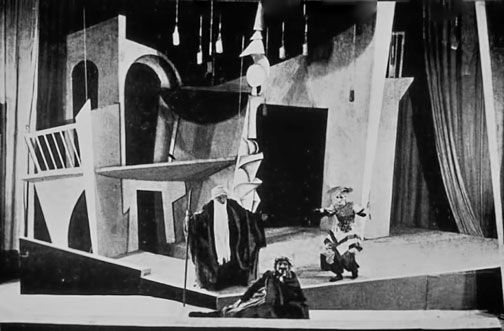
Russian–cubo-futurist, pre-constructivist production of Turandot at the MAT (Studio)- designed by Igor Nivinsky.
1921
Curvilinear cubist futurist – ‘The Strength of the Curve’ – Tullio Crali
1930
Giuseppe Mazzotti Vase with decoration of aereo futurista anteater and seaplane
Albisola, Italy
Phobia antimitativa – Tullio Mazzotti
d’Albisola 1928
Giuseppe Mazzotti Italian Futurist sport figures
Albisola, Italy
Fortunato Depero – ”Nitrito in velocità” 1932
In 1919 Depero founded the Casa d’Arte Futurista (House of Futurist Art) in Rovereto, Italy
St. Christopher – Gio Ponti & Richard Ginori – spherical, futurist style vase
Harlequin mid-century vase made in Deruta and designed by futurist artist Ernesto Nino Road
Some Italian fascists had tried to persuade Mussolini to ban modernism (as Hitler had in Germany) and include Futurism in the list of degenerate art. Mussolini refused because by the late 1930s, the style of Futurism had become the favoured art form for promoting Fascism.
Gino Severini
Italian Futurist Style Pair Of Table Lamps by Sala Italy
1930
Roberto Navarro 1st Dibs
Futurist table lamp, Italy
Dante Baldelli – ‘Archers Vase’, manufactured by Rometti
Jar with lid and winged aircraft in formation – ceramic formed in the mold and decorated with enamel underglaze, platinum highlights
1930-1931
Manlio Trucco-(1884-1974) nude female riding centaur, Albisola 1930
In an early Futurist manifesto they had declared “We demand, for ten years, the total suppression of the nude in painting.” as a reaction to the predominance of classical nudes in Italian art.
Mazotti ceramic cup and saucer with futurist decoration
Albisola, 1930
Medusa Cup – Tullio Mazotti
Terracotta hand decorated in polychrome enamels.
Albisola – 1930
Medusa Cup – Tullio Mazotti ( top view )
Albisola – 1930
Umberto Boccioni – ‘Materia’ – 1912 ( portrait of his mother )
Peggy Guggenheim Collection, Venice
In place of the intersecting architectonic planes characteristic of Cubism, transparent planes with radiating and arching lines imply movement. This led forward to the language Boccioni was to use for his studies of rapid movement in the second half of 1913, such as Dynamism of a Cyclist.
Futurist elephant jar – Rometti, Italy
Futurist Bowl – Nicola Diulgheroff–M.G.A
Gio Ponti — ‘Domitilla’
Italy, 1924
Ceramic compote – Nicolaj Diulgheroff and Tullio Mazzotti Albisola
1930-31
‘Piatto Motociclisti’ dish – Tullio Mazzotti, Albisola
gmazzotti1903
Manilo Tucci Albisola futurista vase
1stDibs – Wyeth NY
Nicolaj Diulgheroff and Tullio Mazzotti futurist vase
Albisola, 1932
Futurist ceramic tea set – Nicolaj Djulgheroff—M.G, Italy
Futurist vessel designed by Robert Venturi
1925
Rometti ceramics
Umbertide, Italy
Futurist tea set – Nicolaj Djulgheroff – 1930
Manufactured by Giuseppe Mazzotti
Slender vase with handles – Series F Giuseppe Mazzotti
Albisola, 1937
Tullio Mazzotti Vase – ‘Amori Fiori’
Dante Baldelli designed vase for Rometti
1935
Futurist cubist sculpture – ‘Development of a Bottle in Space’ (1912) – Umberto Boccioni
Tullio Mazzotti – ‘Vase With Question Mark’
Albisola, 1930-31
Futurist ceramics – Nicolaj Diulgheroff – Tullio D’Albisola
circa 1934
Rometti futurist ceramic set
1933-35
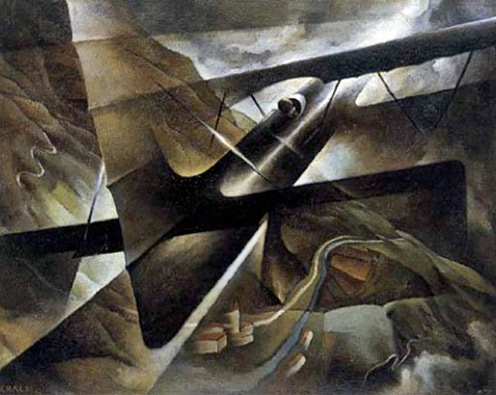
‘Shaking Flight’ by Tullio Crali, 1939
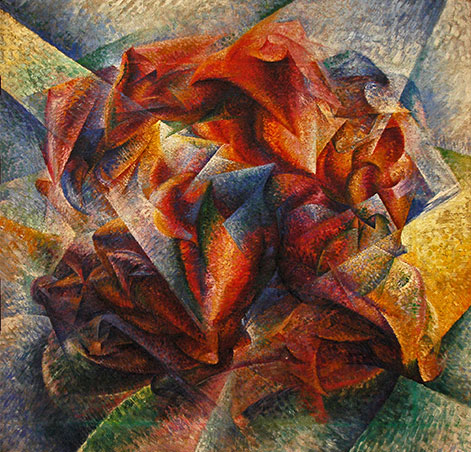
Umberto Boccioni painting ‘Dinamismo di un footballer’
Giacomo Balla – ‘Planet Mercury passing in front of the Sun’
1914
‘Vaso Geometrico’
Designed by Tullio Mazzotti for the Centenary of Movement Futurista 1909 – 2009
‘Dinamismo di un Automobile’ -futurist painter Luigi Rossolo
1912
Futurist Cat Planter—Louis Wain
Imperial Amphora, Austria
‘Piatto biliardo’ – Tullio Mazzotti
Albisola, Italy
1936 Italian futurist plate Nicolaj Diulgheroff, Tullio Mazotti
Albisola
…
Quoted Sources – Italian Futurism: From Cubism in Motion to Fascism’s Official Style
– Before It All Began: The Visionary

